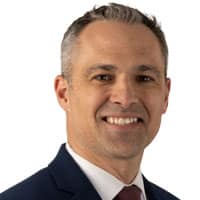
Are you motivated to grow your practice?
Most of you would probably say yes, just like the 91% of advisors who took part in a study by Janus Henderson and the Financial Planning Association and either “strongly” or “somewhat” agreed with a similar statement. (“I am motivated to grow my business.”)
While advisors believe that growing their practice is important, they are having varying levels of success. In some cases, they’ve achieved short-term growth, but it may not be sustainable based on the systems, processes and mindsets we found important to long-term success.
We highlighted not only these issues but solutions in our 2024 Wealth Planning Trends. The study revealed six key characteristics of advisory practices that consistently see organic growth. Specifically, we defined successful organic growth as bringing in 10 or more new clients in the past year.
1. The Anatomy of a Business Plan Matters
Many of the advisors in our study had a business plan that was comprehensive but lacked a structured approach to growth. When we asked what metrics advisors were using to track growth, they mentioned assets under management (AUM), new clients and new revenue. But these metrics only partially answer the question of how to continually grow because they focus on lagging indicators. While these are certainly important, a number of leading metrics lead to these outcomes. Notably, we found that practices focusing on client satisfaction and prospect meetings achieved greater growth.
2. Knowledge vs. Action
Many advisors in the study knew what they needed to do to foster growth. However, the gap between knowing and doing was often a stumbling block.
For example, 64% of advisors thought it was important to have a clear plan for growth but only 30% said they actually had this plan in place. In many cases, short-term circumstances got in the way of advisors being able to implement and focus on their growth plan. For example, many advisors noted that client requests about cryptocurrency, or not wanting to appear too “pushy” or “salesy,” got in the way. In other cases, the lack of a clear growth plan stemmed from not taking the time to develop individual or team skills.
In the end, success and growth come down to taking the time to implement a growth plan, but also focusing on what you’re good at and the services that will truly drive growth.
3. The Power of Teams
Our study revealed that firms with teams grew faster than solo practitioners. In fact, growing from a sole practitioner to a team of just two to three people nearly doubled the chances of bringing on 10 or more clients in a year. Now, this isn’t to say that if you’re a sole practitioner you should instantly go out and partner with the first advisor you run into. Creating the right partnership or team is key.
The study also found that making sure every team member understands their role and how it contributes to the practice’s growth plan is a significant driver of success. For example, teams that strongly agreed with the statement “team members fully understand goals for the business” were more than twice as likely to have added 10 or more clients than those teams that only “somewhat agreed.”
Additional Reading: Estate Planning: What Real People Want to Know
4. Systems and Processes
A strong foundation of systems and processes is crucial for sustainable growth, the study revealed. An overwhelming majority (89%) of advisers agreed that having the right processes and systems is critical to business growth. However, only 59% reported that they have completed this work.
These processes are necessary for advisers to attract and onboard new clients, prevent staff burnout, and achieve desired client-satisfaction levels. And while a number of the advisors surveyed used an informal process, I think we can all agree that a formal process is much more sustainable and likely to produce results. Specific to organic growth, this process should focus on making sure that the prospective client experience is documented and leverages workflow automation where possible.
5. Engaging the ideal client
Defining the ideal client is one thing; actively engaging them is, as we found, is another. The advisory practices that achieved the greatest growth did two things.
First, they defined their ideal client. Second, they made sure they were actively engaging with them. This included marketing materials, strategic wording of their value proposition, outreach and educational efforts, and even their office décor and setup.
To succeed in this area, it important to ask yourself, “How are we communicating or ‘speaking’ to our ideal client in our marketing efforts and experience design?”
6. Mindset matters
Finally, we asked advisors to describe themselves: Are you resilient, optimistic, gritty, and/or curious? Many respondents described themselves as more than one of these, but the advisors who achieved the greatest growth described themselves as optimistic and/or resilient.
I don’t mean to suggest that you need to change who you are, but this finding speaks to an opportunity to review how you communicate to prospective clients through your marketing materials, website or other modes. Are you highlighting the ideas of resilience and optimism? If not, is there a way to enhance these ideas?
Many advisors are motivated to grow their practices. And almost half (46%) are comfortable with their current growth rates. Whether you’re comfortable with your growth or not, I believe the six characteristics uncovered in this study, as well as the questions they may prompt, are important.
Not only should you consider them now to ensure you’ve created a good growth plan, but you should return periodically to make sure you’re still on track. Just like a good financial plan, a good growth plan needs to be reviewed. Questions need to be asked and changes may need to be made.
Ben Rizzuto, CFP®, CRPS® is a wealth strategist with the Specialist Consulting Group at Janus Henderson Investors. In this role, he works with financial advisors and their high-net-worth clients to find solutions to today’s increasingly difficult retirement, wealth transfer and financial planning issues. This article is for educational purposes only.







